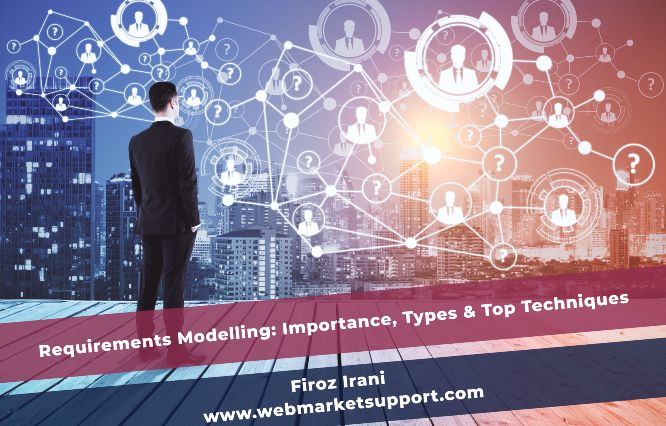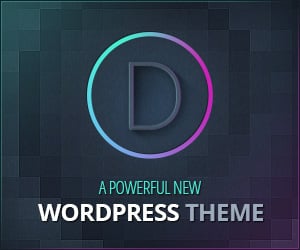Day by day the usage of the word “requirements” and its significance keeps on increasing especially in the software development realm.
All thanks to agile software development methodologies. Now earlier what used to happen was all the random information was collected, stored, and processed without any purpose.
As a result, people often used to get baffled and have no idea about what they are doing and how they can put such information to use.
Enter Requirement modelling.
Here you will get well-acquainted with what is requirement modelling and why it should be considered right away!
Requirements Modelling
Importance, Types & Top Techniques
So what is Requirement Modelling?
Well, it is the core process of documenting, analyzing and managing a wide range of requirements.
Now the good aspect or bad aspect of any need or requirement is that it keeps on changing every now and then. So one has to keep regular tabs on it and work accordingly. Fortunately, the internet is flooded with such information, relevant resources, and posts on requirement modeling and here is the one for you.
Requirement modeling is a cross-functional technique for modeling different requirements and solutions from time to time. Requirement modeling results in a collaborative work approach and seamless cooperation. By doing so, both you and your stakeholders can remain rest assured that their requirements will be fulfilled and in the end, they will receive exactly what they have been expecting all these days. In other words, requirements modeling is all about gathering information, processing documentation, analyzing and managing them in the nick of time.
Types of Requirement Modelling
Now requirements or the wants of end users can be bifurcated into different categories:
Business Requirements – What are the ultimate goals and objectives and outcomes? Basically, every business has the same goal to enhance the empire and maximize profits, minimize expenses, conduct services to a new level, etc.
Stakeholder Requirements – Are the needs of the stakeholders met? Often stakeholder requirements are called user requirements. So how the users find the product, in the end, is extremely important here.
Solution Requirements – Does the end solution meet the stakeholder requirements?
- Functional – Quality attributes, general characteristics, is the product developed keeping the end users and their convenience in mind.
- Non-Functional – Behavior features, security, performance, etc How is the navigation here, integrity, efficiency, and fault tolerance?
Transition Requirements – Has the transition been successfully conducted from the current state to the future state?
Why Requirement Modelling is Important?
One of the obvious reasons to consider requirement modeling is that you can achieve fast, scalable and consistent results in no time.
Apart from this, the development team gets a better understanding of the entire product and its procedures. Not just that, even the stakeholders and clients can see whether their requirements are being matched or not.
Here one can aspect seamless collaboration and instant feedback, so there is no scope for any problems or issues in the later stage.
Every team member gets a better understanding of their roles and responsibilities. In case, if the requirements are changed, addressing them is no big deal.
Also, Requirement modeling offers a plethora of benefits such as:
- Simulations can be developed in no time
- Automatic generation of documents is possible
- Conducting tests can be automated
- Easy and seamless integration of test tools
- Ever-changing requests can be managed as well
- Overall get a better understanding of what you will be doing
- Determine deadlines and make sure the project is completed on time
- Also, focus on assumed requirements
- Creating relevant features and functionalities
- Cutting costs and finding out different ways to reduce time to market
Top Requirement Modelling Techniques
Fortunately, with the ever-going advancements in the technological realm, you have a plethora of tools and technologies to look out for. Any need and there is a perfect tool available to you and requirement modeling is not an exception at all.
Further, I would like to mention some of the most prominent techniques to consider especially when it comes to requirement modeling.
#1 Requirement Traceability Matrix
It’s basically a table which shows the exact relationship between different requirements. Here professionals can ensure all the requirements are met thoroughly or not.
#2 Used Cases
A use case is pretty much descriptive in nature. It basically focuses on how the user will interact with the system to achieve specific goals. Most of the time, use cases are meant for capturing functional requirements. Also, here high-level functionalities can be well-depicted.
#3 User Stories
Now this has to be a pretty short summary of features. The only twist here is the perception should be of the end users.
#4 Activity Diagram
Here the whole business process is taken into account. And this should be done. After all, one must know whether it is appropriate for all users or not. Here detailed impact analysis can be conducted.
#5 Process Flow Diagrams
As the name implies, here it is shown how different tasks are performed in a process. Both functional and non-functional requirements are taken into account here.
#6 State Diagram
This one turns out to be a more descriptive and detailed approach. Different states of an object can be depicted here.
#7 Sequence Diagram
If the user is technical. This one is pretty much relevant to them. Here all the visualization takes place between different processes or objects especially when they are interacting. The entire scenario matters here and all this is showcased in a pretty graphical way. This particular approach definitely offers additional value as they get to know specific technological specifications here.
Notice
Lastly, before we conclude, one must know that every project is and will not be the same and so will be their needs and requirements. Here you will have to address each project individually. However, there is one common factor among all, every project’s requirement has to be fairly detailed.
The more detailed and descriptive these requirements are the chances of meeting them in the estimated time limit increases. Also, here one can identify possible mistakes as well as potential opportunities before conducting the development process. Here you need to try looking for more skilled and experienced professionals. By doing so, you can find cost-effective and quick solutions.
Also, when you draft a requirement document make sure it is easy to understand for everybody. Using a plethora of jargon and heavy technical phrases is a big no-no. The document must be reviewed in the end.
Conclusion
You see, taking any project into account, gathering requirements and analyzing them to its core is the first and foremost step here. In the end, desirable results are guaranteed. So make sure the requirement modeling process is fairly detailed and easy to go through for everyone involved such as the customer, product owner, and development team.
I hope now you know what is requirement modeling, and how it can be beneficial in the very long run, especially in regard to seamless communication and reduced ambiguity. I hope the following post was worth the read. In case, if you have any confusion or doubts, feel free to mention them in the comment section below. We will surely get back to you as soon as we can.
Also, It would be great if you share the following post with your peers and help us out in reaching more readers.

Firoz Irani
Technical Business Analyst
Firoz Irani is a highly skilled technical business analyst with years of experience at TatvaSoft. He has a background in design, data analysis, and project management. He strongly believes that knowledge is meant to be shared, for there is a lot we can learn from each other.


















0 Comments